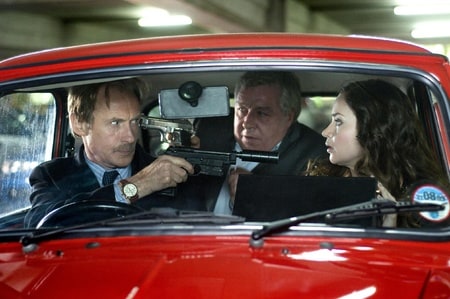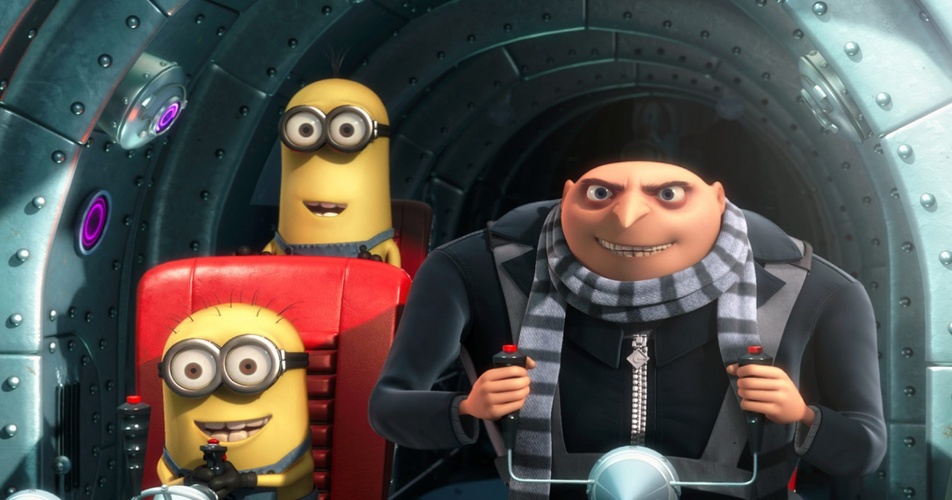It is absolutely beyond this reviewer's mental parameters as to why Wild Target endured such a ruthless critical reception during its fleeting theatrical run in 2010. Perhaps it depends on mood and expectations, but Wild Target is a wonderfully droll, effortlessly charming and spry action-comedy from the British school of black humour. Rarely less than tear-provokingly hilarious, this movie is a grand, quick-witted slice of entertainment which harkens back to the screwball heist comedies of yore; a time when making viewers laugh was more important than constructing an intricate narrative. Sure, the plot is not at all original and the film is somewhat predictable, but if you need a dose of quality British-flavoured comedy (i.e. offhand, self-deprecating, and coming in equal doses of light and black), you cannot afford to miss this one.

Rose (Blunt) is a con artist and a thief who exercises her significant sexual allure to cheat, lie and steal her way through the average day. For her latest scam, Rose looks to make a killing by selling a forged Rembrandt self-portrait to gangster Ferguson (Everett). Unfortunately, she doesn't get far before the scam is exposed and Rose finds herself face-to-face with legendary assassin Victor Maynard (Nighy). Victor fails to carry out the contract due to unexpected difficulties, however, and soon afterwards he accidentally protects Rose from a second set of hired guns. Leaving town with Rose and impressionable bystander Tony (Grint), Victor takes refuge in his stuffy home. As Rose teaches the uptight assassin to loosen up a tad, another hitman (Freeman) is hired to finish the job.
Directed by Jonathan Lynn (best known for the BBC series Yes, Minister), Wild Target is based on the 1993 French farce Cible émouvante but is so thoroughly and quintessentially English in both spirit and humour that its French origins are hard to detect. The central conceit of a trained killer being domesticated is nothing new, but Lynn and his writers (Lucinda Coxon and Pierre Salvadori) managed to construct a slant on the material that is fresh-feeling. There's a rapid-fire string of clever verbal and visual gags which provide a great deal of laughs, while the script is fertile ground for witty dialogue. One would expect things to become far less interesting once the three fugitives arrive at Victor's stately mansion, but the psychological humour is just getting started and there's almost always something funny happening. The pace is kept welcomely brisk throughout, with only a few moments that sag. Not many movies are capable of delivering quality laugh-out-loud hilarity, but Wild Target succeeds on this front. The humour may not be to everyone's taste, but Wild Target is guaranteed to make you laugh if you adore British comedy.

The trio of stars constituting the main characters - Nighy, Blunt and Grint - lighten up the screen of whatever film they're gallivanting through, and this is unchanged for Wild Target - they all have a lively synergy, and play off one another to deeply hilarious effect. Nobody does constipated English reserve better than Nighy, and in Wild Target he's as uptight as they come; parlaying his scarecrow-like physique into some of the stiffest slapstick imaginable. Alongside him, Emily Blunt is essentially the British Zooey Deschanel - flirty, indie-cute, irresistibly gorgeous, and well-dressed - and as Rose she was given welcome respite from her regular roles in Victorian-era costume dramas. Likewise, it is refreshing to see Rupert Grint - who has spent a full decade as Harry Potter's best friend - outside of the halls of Hogwarts for a change. Grint has real acting chops that he was able to express here. Together, Nighy, Grint and Blunt form a love triangle of acutely comic angles. Playing another hitman, Martin Freeman is in fine comedic form here; his hilariously exaggerated white teeth and spot-on comic timing are huge assets. To round out the cast, Rupert Everett and Eileen Atkins - as Ferguson and Victor's mother, respectively - clearly had an absolute ball playing their characters.
Perhaps Wild Target is a bit too unoriginal and a tad too neutered (consider the PG-13 rating), but it easily earns a recommendation. It did not deserve such a thorough trashing by the critics. Sure, it's no masterpiece, but it's a nice, fun, sprightly British diversion with good actors, a notably lively soundtrack, and plenty of quality gags. With Hollywood churning out masses of heavily clichéd, unfunny studio-produced comedies every single year, something like Wild Target should be intimately embraced.
7.7/10
 Login
Login
 Home
Home 183 Lists
183 Lists 1671 Reviews
1671 Reviews Collections
Collections
 0 comments,
0 comments, 



































